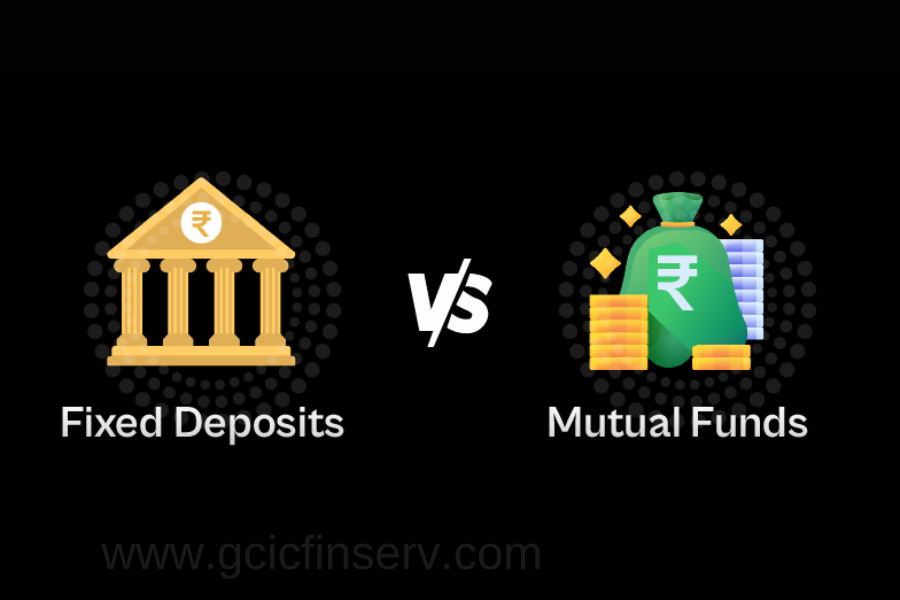When it comes to parking your savings, two of the most popular options in India are mutual funds VS fixed deposits (FDs). Both investment avenues have unique features, benefits, and limitations. If you’re wondering which is better – FD or mutual fund – this detailed guide will help you make an informed decision.
1. Understanding the Basics
Fixed Deposits (FDs)
A fixed deposit is a traditional savings instrument offered by banks and NBFCs. You invest a lump sum for a fixed tenure at a predetermined fixed deposit interest rate, and you receive guaranteed returns at maturity.
Key features of FDs:
-
Capital protection – principal amount is secure.
-
Fixed, predictable returns.
-
No market-linked risk.
-
Suitable for conservative investors.
Mutual Funds
A mutual fund pools money from multiple investors and invests in stocks, bonds, or other securities, managed by professional fund managers.
Key features of mutual funds:
-
Returns depend on market performance.
-
Can be equity-oriented, debt-oriented, or hybrid.
-
Flexible investment options via SIP or lump sum.
-
Potential for higher returns compared to FDs.
2. Mutual Fund vs FD Returns
When comparing mutual fund vs fixed deposit interest rate, the difference is significant:
-
FD interest rates in 2025 typically range between 6% – 7.5% p.a. depending on tenure and bank.
-
Debt mutual funds can generate around 7% – 8% p.a., while equity mutual funds have the potential to deliver 10% – 15% p.a. or more over the long term.
Key takeaway: FDs offer guaranteed but moderate returns, while mutual funds can offer higher returns but with varying levels of risk.
3. Risk Factor – Safe Investment FD vs Mutual Fund
-
FDs are low-risk since returns are fixed and not affected by market volatility.
-
Mutual funds carry risk, especially equity-oriented ones, since returns fluctuate with market conditions.
-
Debt funds are relatively safer than equity funds but not entirely risk-free.
Conclusion: If safety of capital is your top priority, FDs are safer. If you can tolerate some market volatility, mutual funds may deliver superior returns over time.
4. Tax Benefits – FD vs Mutual Funds
-
Tax on FDs: Interest earned on FDs is fully taxable as per your income tax slab. There are no special tax benefits unless you invest in a 5-year tax-saving FD under Section 80C, which has limited deduction benefits.
-
Tax on Mutual Funds:
-
Equity funds: Long-term gains (after 1 year) are taxed at 10% (above ₹1 lakh), while short-term gains (before 1 year) are taxed at 15%.
-
Debt funds: Gains are taxed as per your income slab (post recent changes removing indexation benefits).
-
Verdict: Mutual funds can be more tax-efficient, especially equity funds, if held for the long term.
5. FD vs Mutual Fund Investment Comparison
| Criteria | Fixed Deposit (FD) | Mutual Fund |
|---|---|---|
| Returns | Fixed (6% – 7.5%) | Market-linked (7% – 15%+) |
| Risk | Very low | Low to high depending on type |
| Liquidity | Premature withdrawal penalty | Flexible redemption (may have exit load) |
| Taxation | Interest fully taxable | Tax-efficient for long-term equity funds |
| Investment Mode | Lump sum only | SIP or lump sum |
| Best For | Conservative investors | Growth-oriented investors |
6. Best Investment in 2025 – FD or Mutual Fund?
-
Choose Fixed Deposits if:
-
You want guaranteed returns.
-
Your priority is safety over growth.
-
You have a short investment horizon.
-
-
Choose Mutual Funds if:
-
You seek higher long-term growth.
-
You are comfortable with market-linked risk.
-
You want flexibility through SIPs or diverse options (equity, debt, hybrid).
-
Bottom line: There is no single “better” option – it depends on your goals, risk tolerance, and investment horizon. A balanced portfolio can include both FDs for safety and mutual funds for growth.
7. Mutual Funds vs FD Risk and Returns – Final Verdict
If your priority is capital protection, FDs are safer. If your goal is wealth creation, mutual funds are better in the long run. Evaluating the difference between mutual fund and fixed deposit helps you diversify and make smarter decisions.
In 2025, with rising inflation and moderate interest rates, a combination of FDs and mutual funds can help you balance safety, returns, and tax efficiency.
Final Thought: When it comes to mutual funds vs fixed deposits, there’s no universal winner – the best investment strategy is one aligned with your personal financial goals, time horizon, and risk appetite.
How to Invest in Mutual Funds
Getting started with mutual fund investing is simpler with GCIC Finserv. Contact us now










